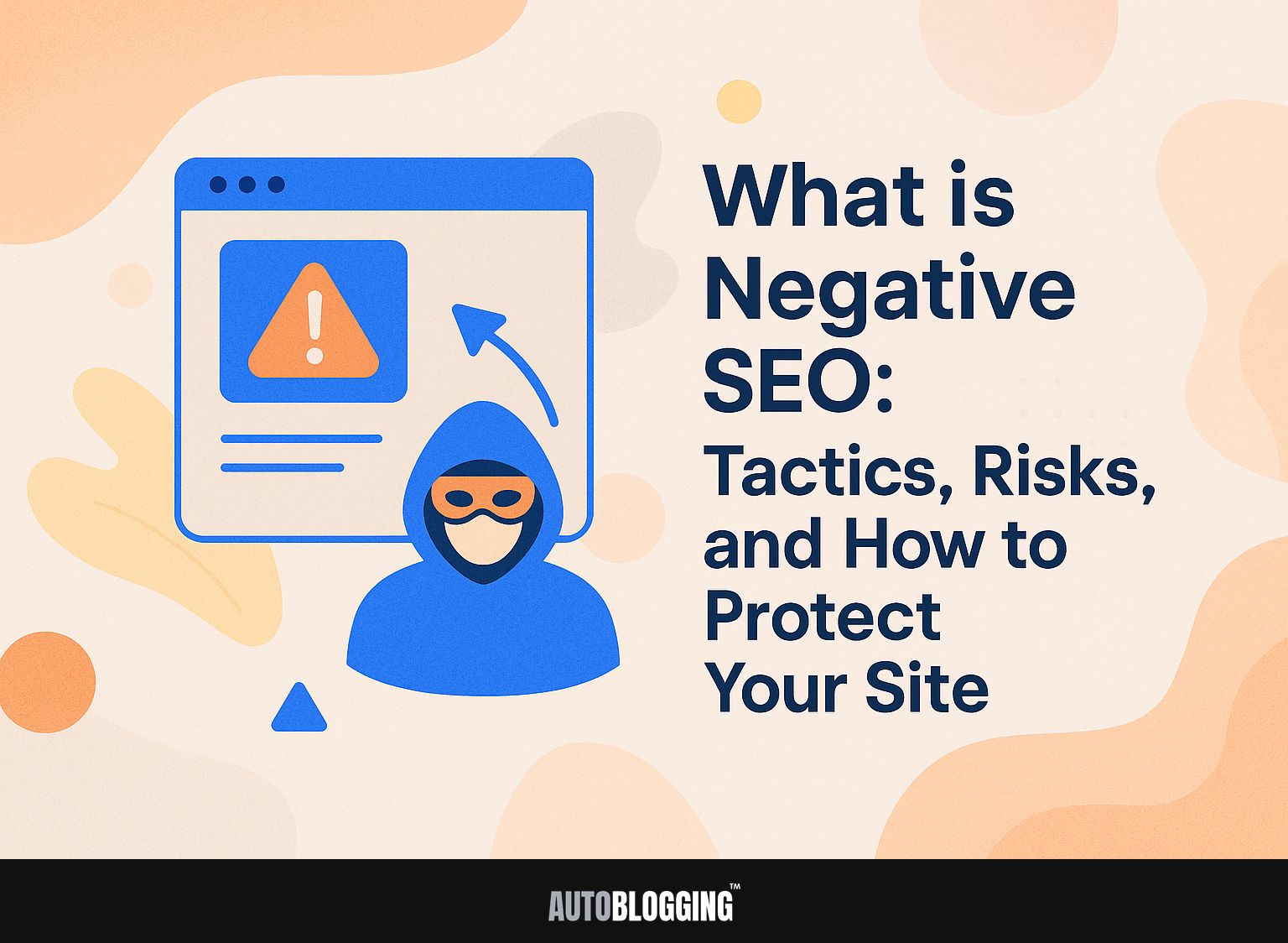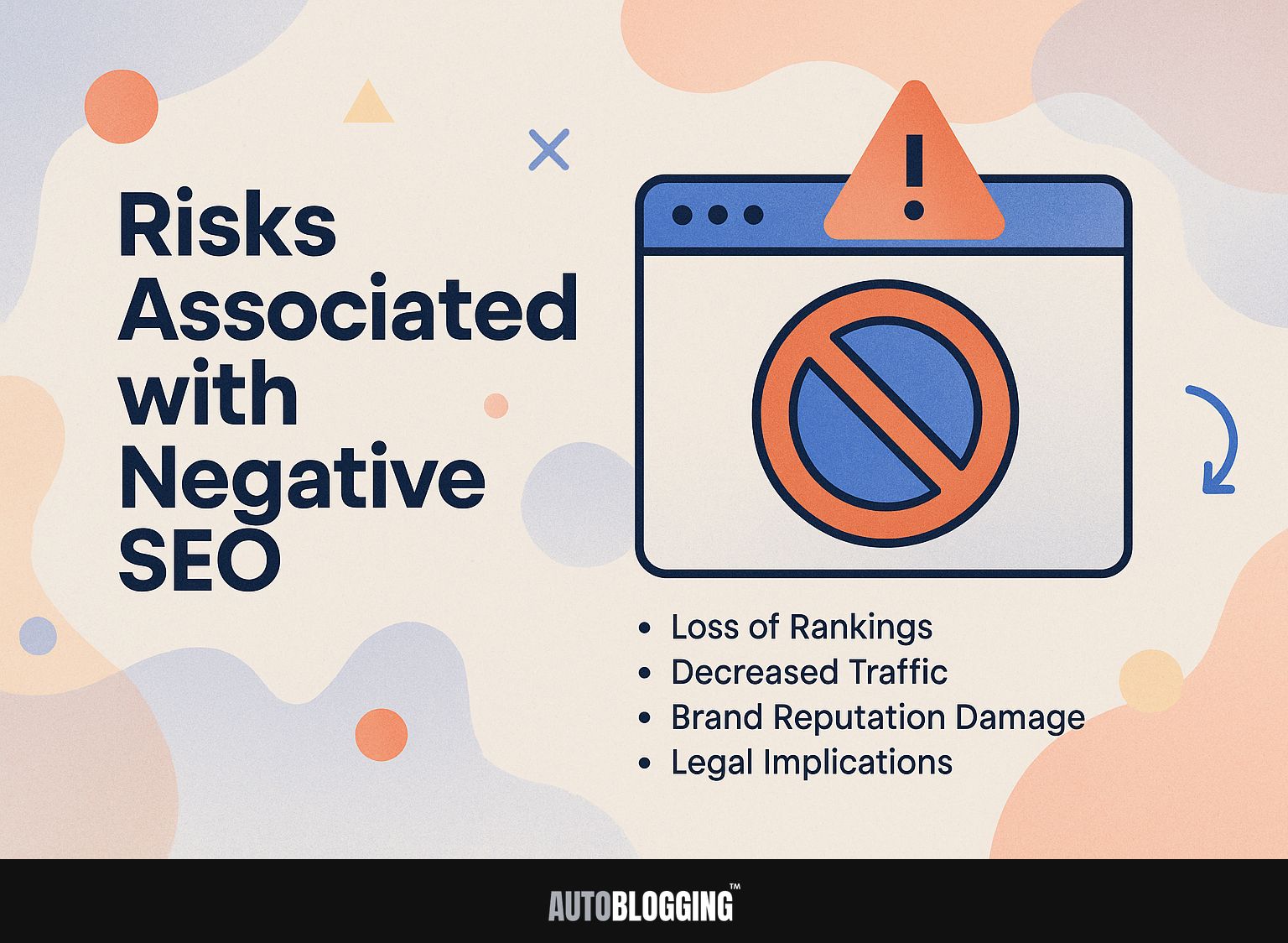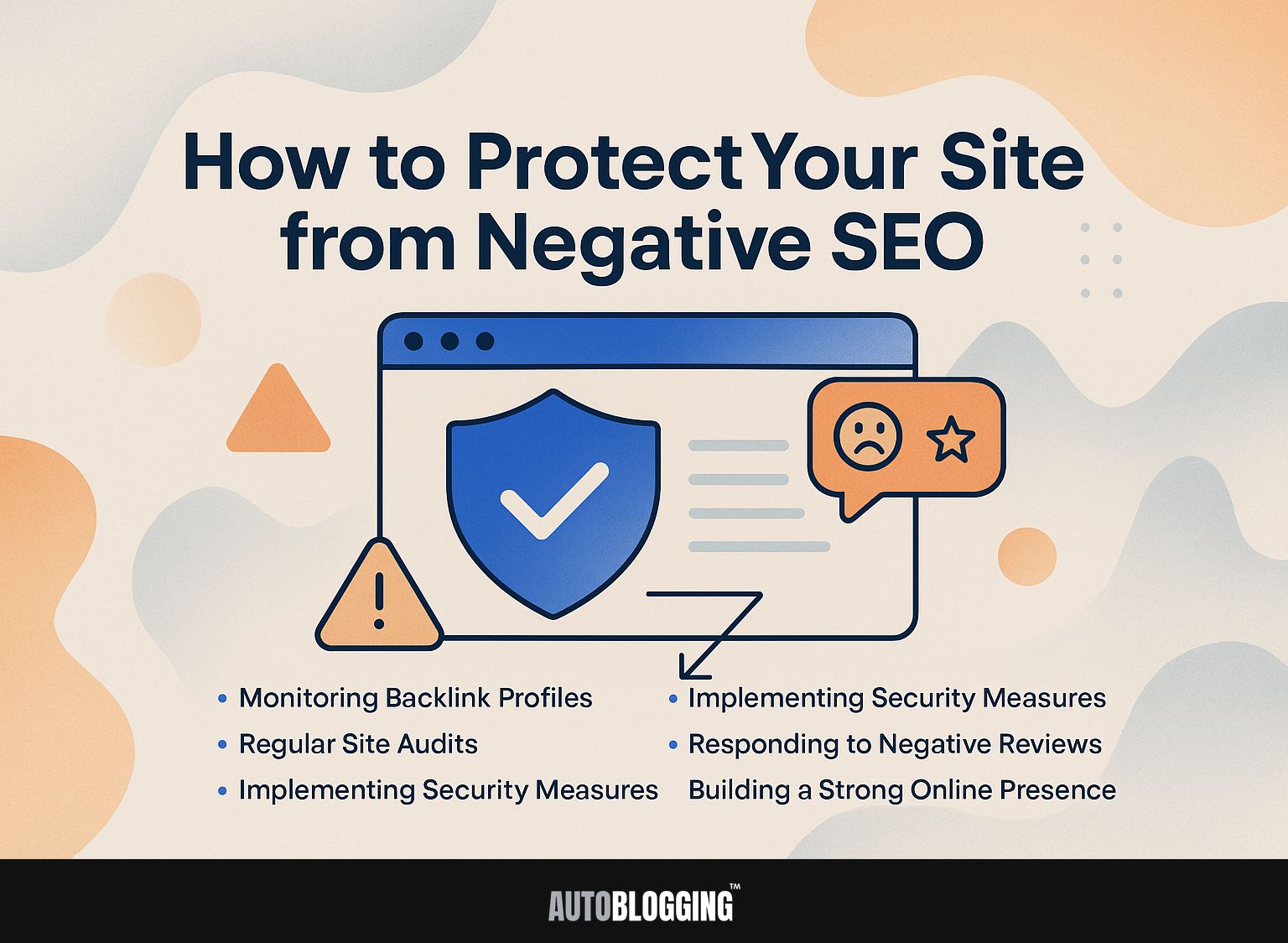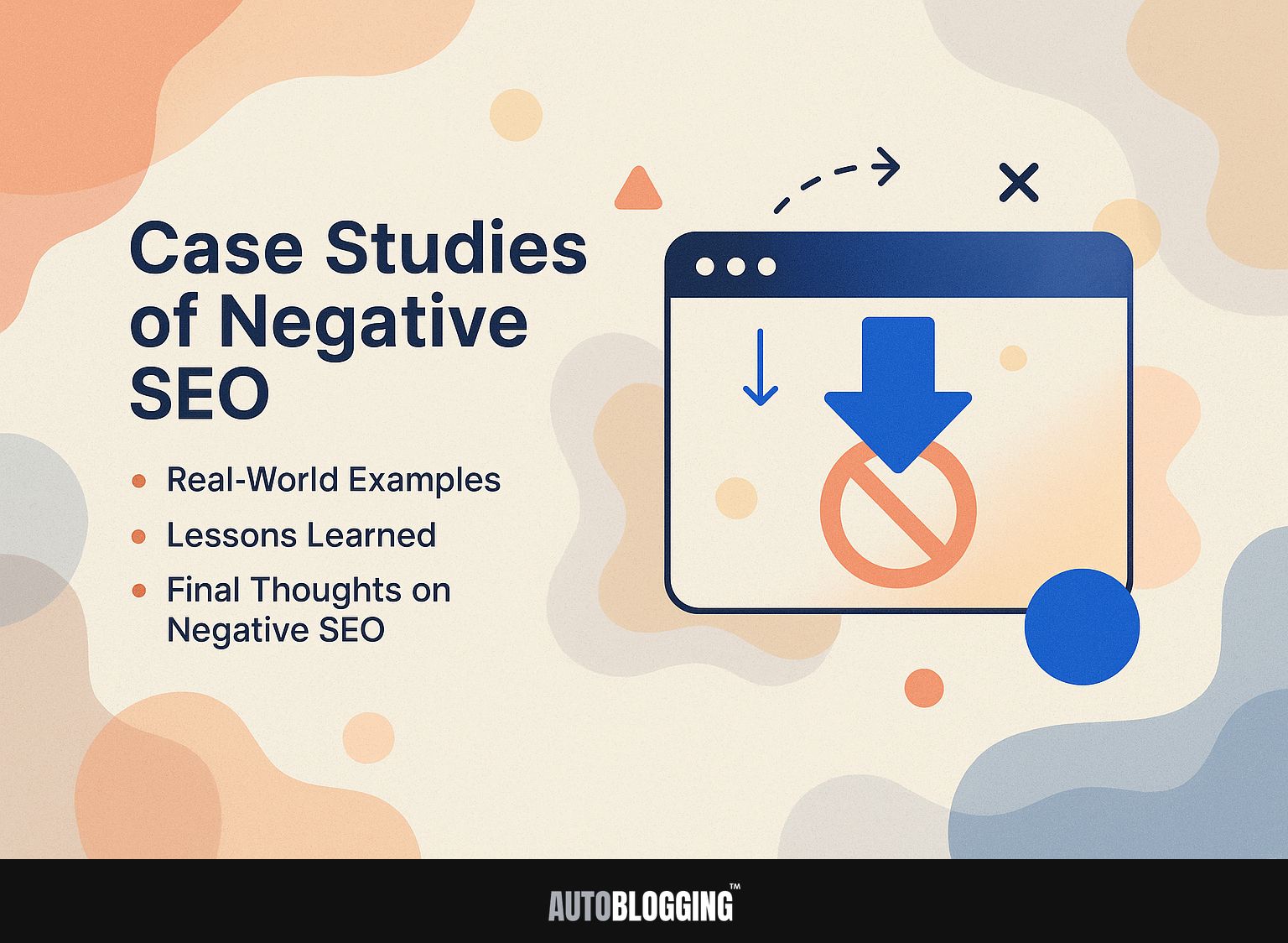
Negative SEO is a growing concern for website owners, threatening to undermine hard-earned rankings on Google. This malicious practice often involves harmful tactics like toxic backlinks and content scraping, leading to potential penalties for your site. In this article, we’ll look at what negative SEO is, the dangers it can lead to, and practical ways to protect your online presence. Stay informed to protect your website and maintain your SEO health!
Key Takeaways:
- Negative SEO is the use of malicious tactics to harm a competitor’s website, often through link spam, hacking, and reputation damage.
- The risks of negative SEO include loss of rankings, decreased traffic, and damage to brand reputation, and may even lead to legal implications.
- To keep your site safe from harmful SEO, frequently check the backlinks, review the site’s condition, set up security precautions, and keep your online presence active.
Contents
- Tactics Used in Negative SEO
- Risks Associated with Negative SEO
- How to Protect Your Site from Negative SEO
- Case Studies of Negative SEO
- Frequently Asked Questions
- 1. What is Negative SEO and why should I be concerned?
- 2. What are some common tactics used in Negative SEO?
- 3. What are the risks of falling victim to Negative SEO?
- 4. How can I protect my site from Negative SEO attacks?
- 5. Can my competitors use Negative SEO against my website?
- 6. What should I do if I suspect my site has been targeted by Negative SEO?
1. Definition of Negative SEO
Negative SEO encompasses various unethical strategies aimed at sabotaging a competitor’s online visibility by manipulating search engine algorithms.
Common tactics include building low-quality backlinks to a competitor’s site, hacking to alter content, or generating fake reviews to damage reputation.
For instance, employing tools like Ahrefs can help you monitor your backlink profile for any suspicious links. If you identify a significant drop in rankings-60% of businesses reportedly experience negative SEO-you might want to disavow harmful links using Google’s Disavow Tool.
Staying vigilant with regular site audits and using tools like Google Search Console can also provide early warnings of potential attacks.
2. Historical Context
Since Google’s algorithm updates like Panda and Penguin, negative SEO has evolved as a strategic weapon in competitive industries.
Post-Penguin, 60% of SEO professionals reported encountering negative SEO tactics, focusing on harmful backlinks and content scraping.
Algorithms became sophisticated, detecting spammy backlinks and modifications in site speed due to malicious activities. To combat this, tools like Google Search Console help identify unnatural links and website performance issues.
Building a strong backlink plan, doing regular checks, and keeping the website safe are important. The journey of overcoming SEO challenges provides insights on effective strategies to maintain visibility.
Getting good backlinks from respected sites can protect you from harmful practices, keeping your SEO strong.
Tactics Used in Negative SEO
People with harmful intentions use various methods in negative SEO, each meant to damage a competitor’s credibility and online reputation. For an extensive analysis of these tactics, our comprehensive study on negative SEO provides insights into the risks involved and strategies to protect your site.
1. Link Spam
Link spam involves creating a large volume of low-quality backlinks to a target website, leading to potential Google penalties. To fight against link spam, use Google Search Console to keep an eye on your backlinks.
Go to the ‘Links’ section to see all the backlinks to your site. Pay attention to any domains that seem suspicious or irrelevant.
Once identified, list these harmful backlinks in a text file, then request disavowal through the Disavow Links Tool. This active strategy prevents penalties and keeps your site’s backlinks in good condition as time goes by.
2. Content Scraping
Content scraping is the act of copying content from a competitor’s website, resulting in duplicate content penalties from Google.
To combat content scraping, start by monitoring your site’s content regularly using tools like Copyscape or Siteliner, both of which can detect unauthorized copies of your text.
Consider implementing technical measures such as limiting the visibility of your content through meta tags or using a watermark on images.
Sending a formal DMCA notice can help remove copied content and prevent automatic data collection. Together, these strategies help protect your original material and maintain your site’s authority in search results.
3. Negative Reviews and Reputation Damage
Negative reviews can be strategically placed to tarnish a brand’s reputation, impacting customer trust and search rankings. (Learn more about the risks and protection strategies for Negative SEO.)
Tools such as Trustpilot and Google My Business are very useful for keeping track of and handling reviews. Trustpilot allows businesses to invite customers for feedback, helping to generate authentic reviews, while Google My Business lets you respond publicly, addressing concerns directly.
Setting up alerts for mentions of your brand can help you remain proactive. Check your reviews often to spot repeated problems. If lots of reviews mention slow service, try speeding up your processes to satisfy customers.
4. Hacking and Site Defacement
Hacking can lead to site defacement, where adversaries manipulate content to damage a brand’s credibility and search rankings. To improve site safety, focus on these practical suggestions.
- First, install an SSL certificate to encrypt data transferred between your site and visitors, increasing trust and improving SEO rankings.
- Regularly update your content management system (CMS), plugins, and themes to eliminate vulnerabilities.
- Implement firewalls such as Cloudflare to filter out harmful traffic and attacks.
- Use strong, unique passwords for all accounts and enable two-factor authentication where possible.
- Regularly run security checks using tools like Sucuri to find possible issues before hackers can take advantage of them.
5. Competitor Analysis Manipulation
Manipulating competitor analysis involves misleading data to harm a rival’s SEO strategies and misdirect their resources.
To effectively deal with these strategies, use tools like SEMrush and Ahrefs. These platforms allow you to monitor competitor keywords, backlinks, and overall traffic trends.
For example, use SEMrush to analyze where competitors rank and identify potential content gaps you can exploit. Ahrefs can show you details about their backlinks, helping you focus on similar sites for your link-building work.
Regularly revising your strategies based on this information can help you stay competitive while dodging the risks of incorrect data.
Risks Associated with Negative SEO
The dangers of negative SEO can seriously harm businesses, leading to lower search rankings and a tainted image. Employing ethical tactics, such as white hat SEO techniques, can help protect against these threats and maintain a positive online presence.

1. Loss of Rankings
One of the most immediate risks of negative SEO is the potential loss of rankings, affecting visibility and traffic.
In 2017, a well-known travel blog experienced a significant drop in search rankings when a rival carried out a harmful SEO attack by creating thousands of poor-quality links to their site. This led to Google penalizing the blog, resulting in a 60% traffic decline.
Tools like Google Search Console can be very helpful in finding bad backlinks, allowing site owners to reject them before they cause serious harm. Regular checks and a strong backlink plan can protect against these attacks and keep the site secure.
2. Decreased Traffic
When a website loses its ranking, it gets less visitors, which can greatly reduce income for online stores and service websites.
Research shows that websites experiencing a drop in rankings can witness a traffic decrease of 50-90%. For example, an online retail site that previously garnered 10,000 visitors a month may find that number dwindling to 1,000 after a ranking loss on search engines.
To mitigate these losses, it’s essential to monitor key performance metrics like organic traffic, bounce rates, and conversion rates using tools such as Google Analytics and SEMrush.
Identifying specific pages that dropped in rankings allows for targeted optimization efforts, ensuring a strategic approach to recovering lost traffic.
3. Brand Reputation Damage
Using harmful SEO practices can ruin a brand’s reputation, causing lasting problems with customer trust.
For instance, in 2014, eBay faced significant backlash when malicious SEO practices led to negative reviews flooding their search results. They set up a strong monitoring system to find and stop these tactics, while starting a campaign to regain consumer trust through clear communication.
Similarly, a small business may suffer if competitors employ backlink spamming, but they can mitigate damage by consistently engaging with their audience and promoting positive reviews. This proactive approach helps restore credibility and signals to potential customers that the brand values transparency and integrity.
4. Legal Implications
Engaging in or falling victim to negative SEO can have legal implications, including potential lawsuits for slander or defamation.
Victims of negative SEO may consider documenting their findings through screenshots and web archives. Finding where the harmful acts come from is important because it can help in court cases.
For instance, if you suspect a competitor is engaging in this practice, tools like Google Search Console can help track unexpected changes in your site’s backlinks.
Always consult with legal experts, especially if the situation escalates. They can give specific advice and plans, like sending letters to stop the actions of those suspected of wrongdoing.
How to Protect Your Site from Negative SEO
To keep your site safe from harmful SEO tactics, take steps in advance and check it often to protect your online visibility.

1. Monitoring Backlink Profiles
Regularly monitoring backlink profiles using tools like Google Search Console can help identify harmful links before they impact your site.
To begin, open Google Search Console, go to ‘Links’, and find any websites that are linking back to your site.
Use the ‘Disavow Links’ tool to declare desired links harmful; you’ll need to create a.txt file listing those URLs. Regular updates to this file are essential as you gather new data.
Use tools like Ahrefs or SEMrush to check your links thoroughly and find any bad backlinks, ensuring your link profile remains strong.
2. Regular Site Audits
Regularly checking your website helps keep it safe and protects it from harmful SEO attacks.
To perform a thorough site audit, start by using tools like Screaming Frog to crawl your site and identify broken links and duplicate content. SEMrush can find problems such as absent meta tags and pages that load slowly.
Make a checklist that includes:
- Checking if your site works well on mobile devices,
- Reducing image sizes, and
- See how quickly your website opens by using Google PageSpeed Insights.
Perform these checks quarterly to keep up with SEO and make the user experience better. Regular audits improve site performance and help you meet changing search engine rules.
3. Implementing Security Measures
Using SSL certificates and firewalls is important for keeping your site safe from harmful SEO attacks.
Plus SSL certificates, consider using Sucuri for website security, which provides malware scanning and removal services.
Frequently update your content management system, plugins, and themes to fix security issues-tools like ManageWP can handle this automatically.
Set up a backup plan with services like UpdraftPlus to allow fast recovery from possible security issues.
Putting these measures in place builds a strong defense system that greatly lowers the chance of attacks and improves the site’s overall stability.
4. Responding to Negative Reviews
Timely and professional responses to negative reviews can mitigate damage and improve brand perception in the eyes of potential customers.
Start by acknowledging the customer’s feelings. A template like, “We’re sorry to hear that you had a negative experience” can set a positive tone. Next, give a short explanation or solution, like, “We’re working with our team to stop this from happening again.” Make sure to ask the customer to talk more by giving your contact details. This shows you value their input.
Tools like Google Alerts can track reviews, while response templates make replying simple and professional.
5. Building a Strong Online Presence
Building a strong online presence through quality content and active engagement can act as a buffer against negative SEO attacks.
To get more attention, focus on creating helpful, targeted content that addresses what your audience wants. Brands like Buffer and HubSpot use blog posts, infographics, and videos to build credibility and attract visitors.
Staying active on social media by using tools such as Hootsuite or Buffer for scheduling helps brands connect with users and reply quickly to questions or issues.
Learn more about effective off-page SEO strategies that can complement your social media efforts and further enhance brand engagement. This proactive method builds trust and reduces the effect of possible harmful SEO, keeping your reputation safe.
Case Studies of Negative SEO
Looking at examples of negative SEO shows the methods used and how businesses successfully defended against them.

1. Real-World Examples
Companies like XYZ Corp and ABC Inc. have experienced negative SEO attacks, leading to significant drops in traffic and revenue.
For instance, XYZ Corp witnessed a 50% decrease in organic traffic within two months of the attack, equating to a loss of approximately $200,000 in sales. In response, they used tools like SEMrush and Moz to identify harmful backlinks and disavowed over 150 toxic links.
ABC Inc. suffered a similar fate, with their traffic plummeting by 40%. They implemented Google Search Console to monitor their site’s health and hired a recovery specialist.
Both companies shared that within six months, they had recovered about 70% of the web visits they had lost, thanks to planned efforts.
2. Lessons Learned
The lessons learned from negative SEO experiences highlight the importance of vigilance and a proactive approach to website management.
To safeguard your website, consistently monitor your backlink profile using tools like Ahrefs or SEMrush, which offer alerts for suspicious activity.
Use plugins like Wordfence and keep your content management system updated for a strong security plan.
Create a reputation management plan that includes regular checks of online mentions and reviews, allowing quick responses to any negative feedback.
By including these practices in your routine, you protect your site and improve its trustworthiness and exposure.
3. Final Thoughts on Negative SEO
Final thoughts highlight the continuous struggle against harmful SEO tactics in the competitive field of digital marketing and the importance of staying alert.
- To effectively combat negative SEO, begin by monitoring your backlinks using tools like SEMrush or Ahrefs, which allow you to identify any suspicious or harmful links pointing to your website.
- Regularly audit your site’s health through Google Search Console to catch any anomalies. Create a proactive reputation management strategy by encouraging positive reviews and engaging with your audience on social media.
- Remember, it’s easier to build a strong online presence than to repair a damaged one, so stay proactive in your digital marketing and online security efforts.
Frequently Asked Questions
1. What is Negative SEO and why should I be concerned?
Negative SEO is the use of unethical tactics to harm a website’s search engine rankings. You should be concerned because it can significantly damage your website’s reputation and traffic, leading to loss of potential customers and revenue.
2. What are some common tactics used in Negative SEO?
Some common tactics used in Negative SEO include spammy link building, content scraping, fake reviews, and hacking. These tactics try to trick search engines, making your website seem less trustworthy or important.
3. What are the risks of falling victim to Negative SEO?
The risks of falling victim to Negative SEO include a sudden drop in search engine rankings, increased spam and irrelevant backlinks, duplicate content penalties, and even complete removal from search engine results pages.
4. How can I protect my site from Negative SEO attacks?
Some ways to protect your site from Negative SEO attacks include regularly monitoring your backlinks and disavowing any suspicious or spammy ones, updating your website’s security measures to prevent hacking, and regularly checking for duplicate content.
5. Can my competitors use Negative SEO against my website?
Yes, unfortunately, Negative SEO can be used by your competitors to harm your website’s rankings. It’s important to keep a close watch on how your website is doing and check your backlinks often.
6. What should I do if I suspect my site has been targeted by Negative SEO?
If you suspect your site has been targeted by Negative SEO, the first step is to identify and document any suspicious activity, such as a sudden increase in spammy backlinks or duplicate content. Then, take immediate action to disavow any harmful links and strengthen your website’s security measures.
